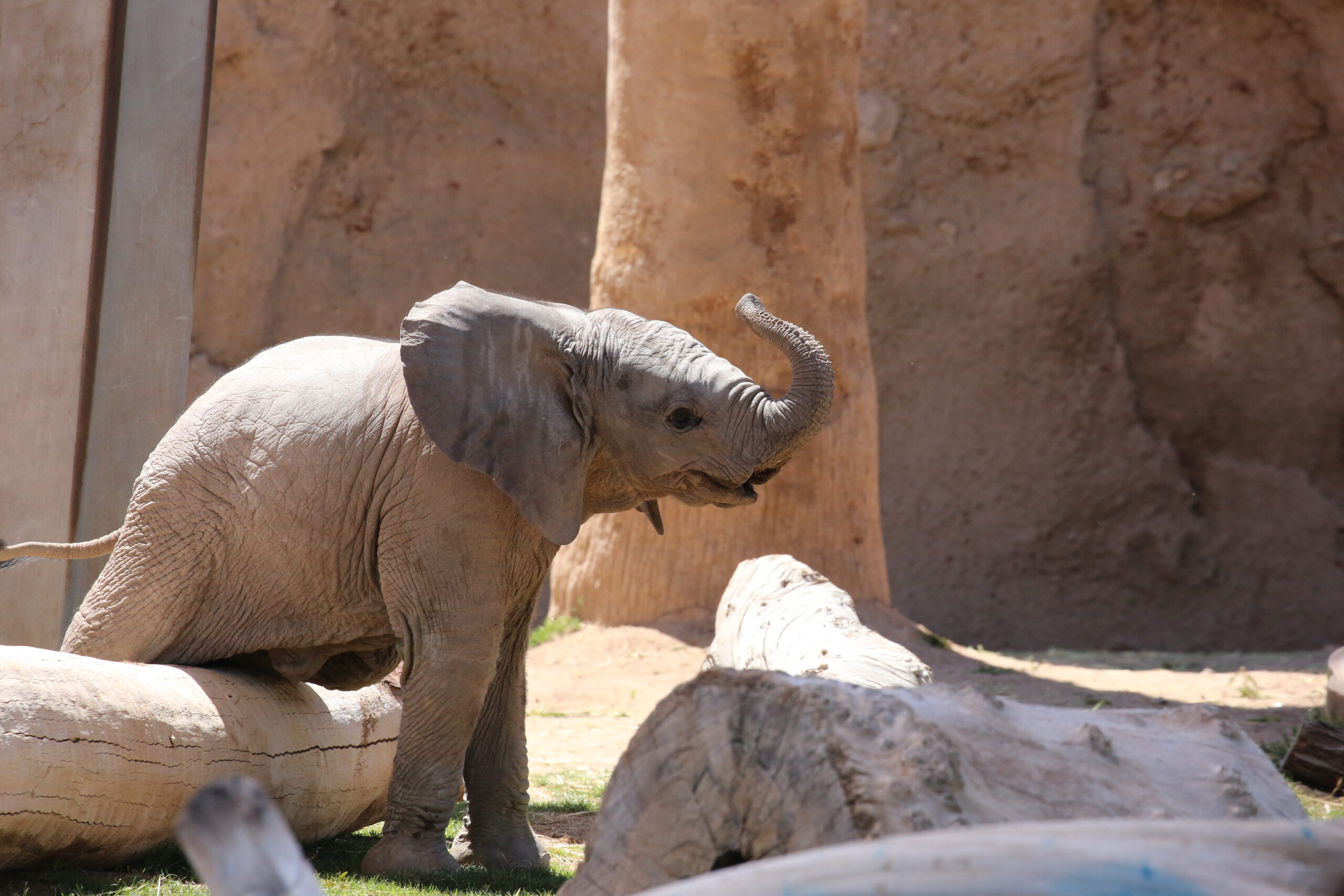Summary of Elephant Calf Named “Meru” in Community Poll :
On April 17, 2024, the Reid Park Zoo in Tucson announced the naming of their African elephant calf born on March 8 as “Meru,” a name inspired by Tanzania’s Mount Meru. The name was selected through a poll with over 19,000 votes from three choices provided by the elephant care team. Meru, the fifth member of the zoo’s herd, shares a symbolic connection with Mount Meru, the fifth-highest peak in Africa. According to Adam Ramsey, Director of Animal Care at the zoo, the name perfectly suits the calf. Visitors can see Meru in the mornings after 10 a.m., although her visibility depends on the daily needs of the elephants and may change. She is energetic and curious, enjoying activities like climbing over logs. Furthermore, Reid Park Zoo emphasizes the role of visitors in supporting elephant conservation through their support of initiatives like the Tarangire Elephant Project, participation in the Species Survival Plan, and contributions to research on elephant care and diseases, such as the elephant endotheliotropic herpesvirus (EEHV).
– The significance of the naming process for the elephant calf at Reid Park Zoo
– The role of zoos like Reid Park Zoo in conservation efforts and education
– The impact of community engagement and participation in wildlife conservation
The story of the African elephant calf named “Meru” at Tucson’s Reid Park Zoo is a compelling narrative that draws attention to various crucial aspects of zoo management, wildlife conservation, and the powerful bond between humans and animals. This article aims to shed light on these themes while focusing on modern zoos’ educational and conservationist responsibilities.
Naming an elephant calf like Meru is not just a matter of preference or aesthetic consideration. In this instance, the naming was a thoughtful decision, connecting the calf to a larger narrative that ties her to the majestic landscapes of Africa and underscores her importance as a species ambassador. The name “Meru,” after Tanzania’s Mount Meru, reflects a deep respect for the elephant’s native habitat and culture. This decision-making process illustrates how zoos can serve educational roles, highlighting the natural world’s intricacies and the critical need for preservation.
Furthermore, the involvement of over 19,000 people in the naming poll for Meru underlines the vital role community engagement plays in the mission of modern zoos. The Reid Park Zoo fostered a deeper connection between the community and the elephant calf by involving the public in this meaningful decision. It underscored the shared responsibility we hold in wildlife conservation. Engaging the public in such activities boosts awareness and support for conservation initiatives, demonstrating the zoo’s role as an educational platform and a center for community involvement.
Zoos like Reid Park Zoo is at the forefront of wildlife conservation efforts, both in situ (within natural habitats) and ex-situ (outside natural habitats). The support for the Tarangire Elephant Project, which conserves over a million acres of elephant habitat, and participation in the African Elephant Species Survival Plan are prime examples of how zoos contribute to conservation beyond their gates. These initiatives help protect elephants and their habitats and provide invaluable data for global research in elephant care, health, and conservation strategies. The fight against the elephant endotheliotropic herpes virus (EEHV), a significant threat to young elephants, underscores the importance of such research and collaboration among zoos globally.
Lastly, the story of “Meru” and the engagement strategies employed by Reid Park Zoo highlight the power of interdisciplinary approaches to conservation. It’s a testament to how zoos are evolving to meet the challenges of the 21st century, balancing visitor engagement, education, and the imperative of wildlife conservation. Through thoughtful exhibit design, educational programming, and active conservation participation, zoos can triumph as champions for animals like Meru, ensuring their survival for future generations to admire and learn from.
In retracing the journey of the elephant calf Meru at Reid Park Zoo, this article illuminates the multifaceted roles that contemporary zoos play in conservation, education, and fostering community connections with nature. Through strategic and compassionate care, focused research efforts, and public engagement, zoos contribute significantly to preserving majestic species like the African elephant. The story of Meru is a poignant reminder of our shared responsibility to protect and cherish the natural world, urging us to support the efforts of institutions that strive to make a difference in the lives of endangered species and their habitats.

